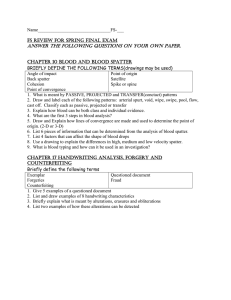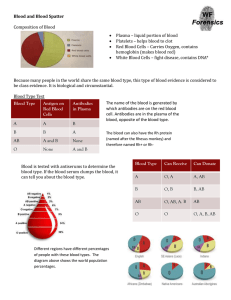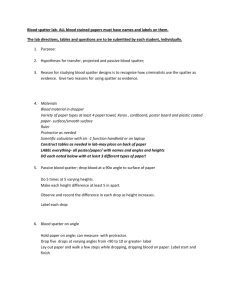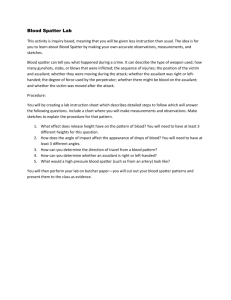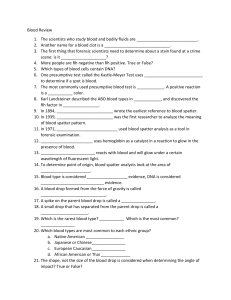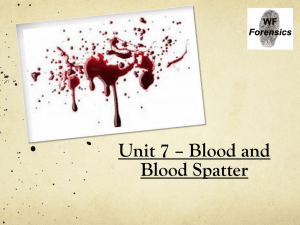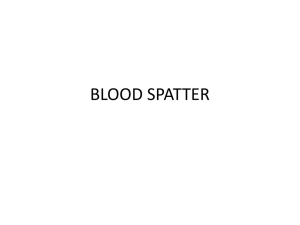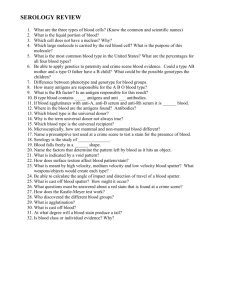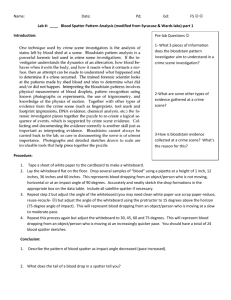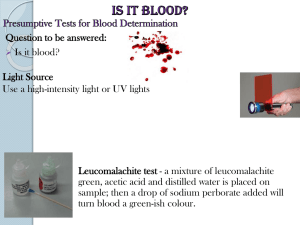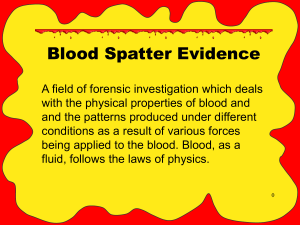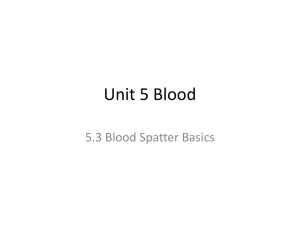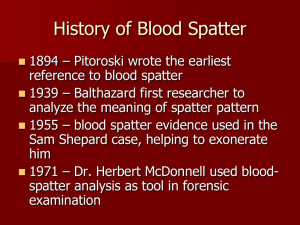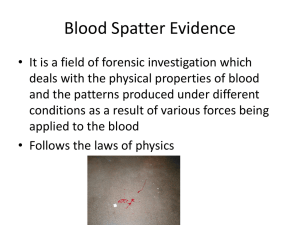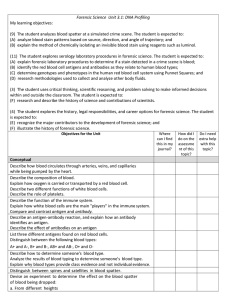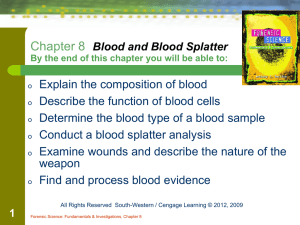Blood Spatter Analysis
advertisement
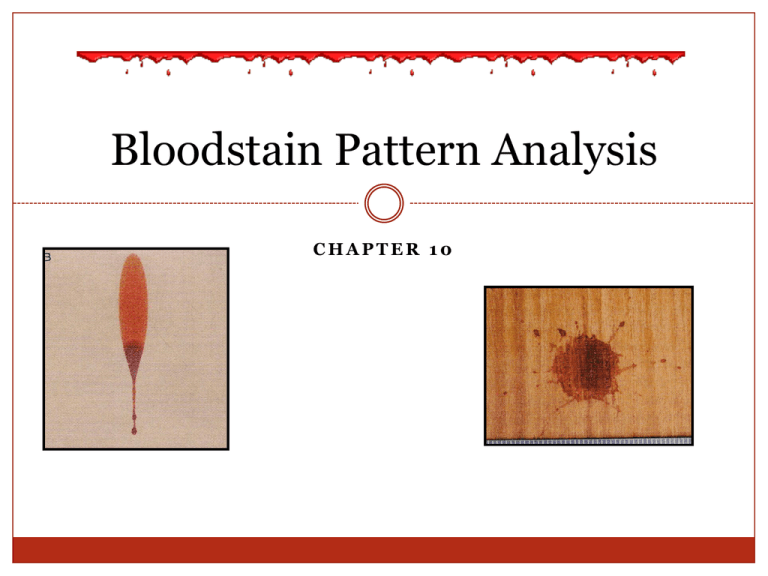
Bloodstain Pattern Analysis CHAPTER 10 Introduction to Blood Did you know You can loose up to 40% of your blood volume and still survive. Beyond that and death is certain. Conditions Affecting Shape of Blood Droplet Size of the droplet Angle of impact Velocity at which the blood droplet left its origin Height Texture of the target surface 4 On clean glass or plastic—droplet will have smooth outside edges On a rough surface—will produce scalloping on the edges Kendall/Hunt Publishing Company Passive Passive Bloodstains Patterns created from the force of gravity Drop, series of drops, flow patterns, blood pools, etc. Determining Distance Blood Falls Drops form circle when hitting surface Size depends on speed of blood drop Blood Spatter Determining Distance Blood Falls Faster drop = larger diameter (size) Higher distance = larger diameter Due to air resistance, speed maxes out at distances above about 7 feet Blood Spatter Determining Distance Blood Falls However, size of drop also depends on the volume of the drop. Volume depends on object blood originated from (needle = small; bat = large) Blood Spatter Since the volume of blood in a drop is unknown… The distance a drop has fallen cannot be measured. Effect of Surface Smooth surface = smooth sphere Rough/porous surface may cause some splatter Transfer or Contact The pattern created when a wet, bloody object comes in contact with a target surface; may be used to identify an object or body part. Projected bloodstains – – – Patterns that occur when a force is applied to the source of the blood Low, medium, or high impact spatters, cast-off, arterial spurting, expiratory blood blown out of the nose, mouth, or wound. Narrow end of a blood drop will point in the direction of travel. Images from http://www.bloodspatter.com/BPATutorial.htm Determining Direction By utilizing trigonometric functions its possible to determine the impact angle for any given blood droplet. SIN 0 = width (a) length (c) SIN < = Width (a) 1.5cm Length (c) 3.0cm Width (a) 1.5cm = SIN < Length (c) 3.0cm 0.5 = SIN < < = 30 degrees Impact The more acute the angle of impact, the more elongated the stain. 90 degree angles are perfectly round drops with 80 degree angles taking on a more elliptical shape. At about 30 degrees the stain will begin to produce a tail. The more acute the angle, the easier it is to determine the direction of travel. Kendall/Hunt Publishing Company 17 Blood Spatter Determining Direction of Blood If more than one drop (from spatter) results, the point of origin can be determined Blood Spatter Determining Direction of Blood If more than one drop (from spatter) results, the point of origin can be determined Blood Spatter For each blood drop, a string can be guided back to the point of origin. Blood Evidence Class evidence for blood would include blood type. If you can determine the DNA you would have individual evidence. Blood stain patterns are considered circumstantial evidence in a court room. Experts could argue many points including direction of travel, height of the perpetrator, position of the victim, left/right hand, whether the body was moved, etc. 21 Kendall/Hunt Publishing Company http://www.nfstc.org/links/animation s/images/blood%20spatters.swf


